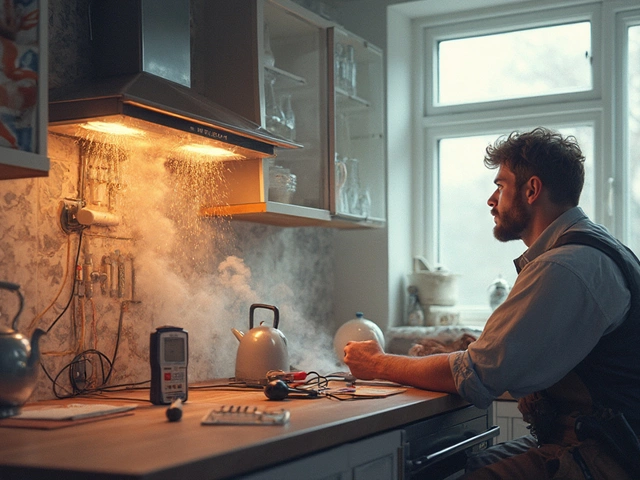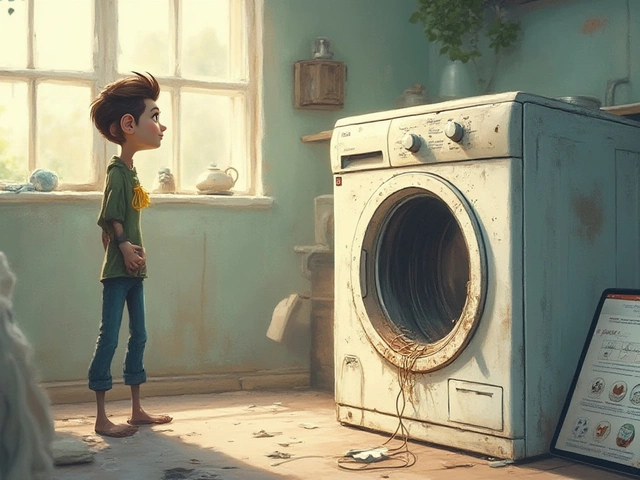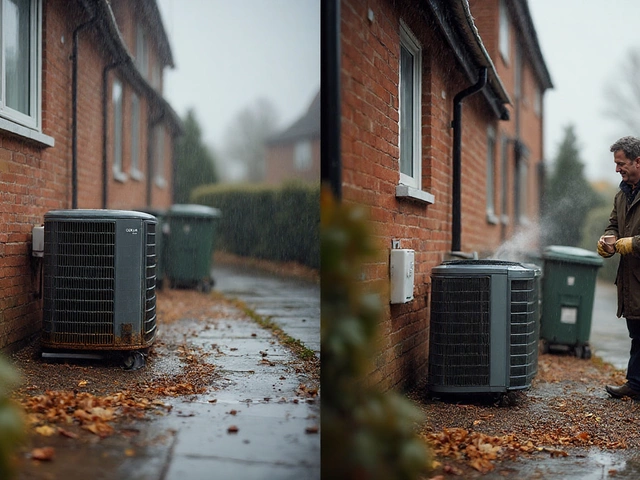When the house goes cold in the middle of a winter night, panic is the first reaction. But a clear head and a few simple steps can often get the heat back on long enough to stay warm while you arrange professional help.
Most heating emergencies boil down to three culprits: a dead thermostat, a stuck heat pump, or a boiler that refuses to fire. A thermostat that isn’t reading the room temperature correctly will tell the system that no heat is needed, leaving you shivering. If your heat pump stops blowing warm air, the most common reasons are a clogged filter, a tripped safety switch, or low refrigerant levels. Boiler issues usually show up as no hot water, strange noises, or a pressure gauge stuck at zero.
Quickly checking these basics can save you a callout fee. First, verify that the thermostat is set to "heat" and the temperature is higher than the current room temperature. If the display is blank, replace its batteries. Next, locate your heat pump’s outdoor unit; clear any leaves or debris that might be blocking airflow, then reset the unit by turning the breaker off for a minute and back on. For a boiler, look at the pressure gauge – most residential units need a pressure between 1 and 1.5 bar. If it’s low, you can usually top it up using the filling loop (consult your manual for the exact steps).
Before you pick up the phone, there are a few safe DIY actions you can take. Resetting the system is often the easiest. Many modern boilers and heat pumps have a reset button on the control panel – press it and wait a few minutes for the system to reboot. If the heat pump is making a whirring sound but no warm air, the indoor fan motor might be stuck; a quick turn of the fan switch on the thermostat can sometimes free it.
Another low‑risk step is to bleed radiators. Air trapped in a radiator prevents hot water from circulating, leaving cold spots. Use a radiator key to open the valve just enough to hear a hissing sound; then close it once water starts flowing. This can improve overall heat output without any technical knowledge.
When it comes to hot water emergencies, a broken domestic water heater can be tackled by checking the reset button on the thermostat (found on the front of most electric units). If the reset trips repeatedly, the heating element is likely failed and needs replacement – a job better left to a qualified plumber.
If any of these steps don’t restore warmth, or if you notice gas odors, leaking water, or unusual noises, stop and call a certified heating engineer. Attempting to fix a gas boiler or a refrigerant leak yourself is dangerous and illegal in many areas. A professional will safely diagnose the fault, perform needed repairs, and ensure your system meets safety regulations.
For residents of Bognor Regis, our local experts understand the specific challenges of coastal weather – salt air can corrode heat‑pump coils faster, and older gas boilers may need annual checks to stay efficient. Keeping a record of service dates and any recurring issues helps the technician pinpoint problems faster.
In short, start with the basics: check settings, clear debris, reset the unit, and bleed radiators. If warmth doesn’t return quickly, or you spot a serious safety issue, call a trusted emergency heating service. Acting fast keeps you warm and protects your home from further damage.

Stuck with a broken boiler and a cold house? This guide shares quick, practical steps to keep your home warm without a working boiler. Learn about safe heating alternatives, ways to trap heat, and smart tricks for getting through chilly nights. Find out what to avoid, when to call a professional, and how to prep for future breakdowns. Perfect for homeowners who want to stay safe and comfortable during a boiler emergency.

Extractor fans are essential for maintaining good air quality in homes, but what happens when they break down? This article explores whether electricians are the right professionals to fix extractor fans, the typical issues these fans encounter, and some maintenance tips to avoid frequent repairs. Learn about the repair process and when it might be time to replace your fan altogether.

Considering replacing your electric oven on your own? Before you jump into action, it's crucial to understand the steps involved and the potential challenges you might face. From ensuring safety precautions to understanding the basic wiring, this article delves into what you need to know. We'll discuss not only the tools and skills required but also when it's better to call in a professional. By the end, you'll have a clearer picture of whether you should tackle this task yourself or seek expert help.

Find out when repairing your dryer isn’t the smart move. Learn real signs, safety warnings, and how to choose between fixing and just getting a new one.

Repairing an aging laptop can be a tricky decision. This article explores whether it's still worth investing in a 7-year-old device. We'll consider factors like performance, cost, potential upgrades, and environmental impact. Dive in to learn about the practical and sentimental value of maintaining your trusty laptop.

Real UK lifespan for air vs ground source heat pumps, what shortens or extends life, maintenance steps, and a simple repair-or-replace guide you can actually use.